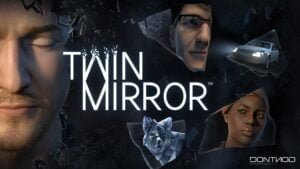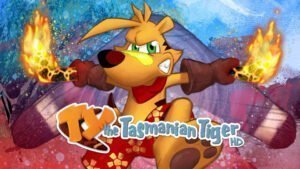(Reviewed on Xbox One by Games of DAYNE)
Assuming control of some of the most iconic starfighters in the galaxy has never felt so satisfying. Star Wars: Squadrons is an authentic Star Wars experience epic in scope.
Star Wars: Squadrons thrusts players into the cockpit of opposing factions in this first person blend of arcade and simulation gameplay. Initially overwhelming, the gameplay mechanics are cleverly integrated with the HUD, allowing for a seamless visual presentation that doesn’t unnecessarily clutter the screen. Learning the ropes to become one of the galaxies most esteemed pilots is fun and consistently engaging.
Vanguard 5 and Titan 3 standing by
Opening with a brief and very limited pilot customisation menu that allows the player to select one of 10 generic faces, their gender, a voice and name for each pilot, the player may initially think there is little customisation. Fear not as the customisation for the multiplayer component is far more diverse and flexible. The pilots for the purpose of the story receive very little screen time, these choices here do little more than attempt to add a bit of personality to the players characters.

The customisation, and 14 mission story that includes a prologue that follows, serves largely as a tutorial for the multiplayer component. With story progression comes the introduction of new mechanics, transitioning the gameplay from a semi-arcade feel to an experience that feels more like a simulation. These diverse mechanics are fun and keep the player constantly engaged and thinking about their next move, leaning towards a more strategic and tactical approach to combat.
Set after the events of Star Wars: Episode VI – Return of the Jedi, the opening mission sets up the key characters of the 6-8 hour single player experience ahead with some cool cameos that are well implemented.
The story itself is interesting, presenting a dual narrative that shifts perspectives from missions that often set up the following mission for the opposing faction. Opting to intertwine the tale of the rising New Republic and the crumbling Empire as opposed to two separate campaigns adds to the intrigue, knowing that the actions of one faction during a mission will have direct consequences for the other in their next mission.
Flying as Vanguard 5 for Vanguard Squadron of the New Republic and Titan 3 of Titan Squadron for the Empire, a missed opportunity exists in that the two playable characters and their respective squadrons at no point come head to head. While their stories are influenced by the actions of the other, it is very unfortunate to not have any kind of playable payoff to the conflict.
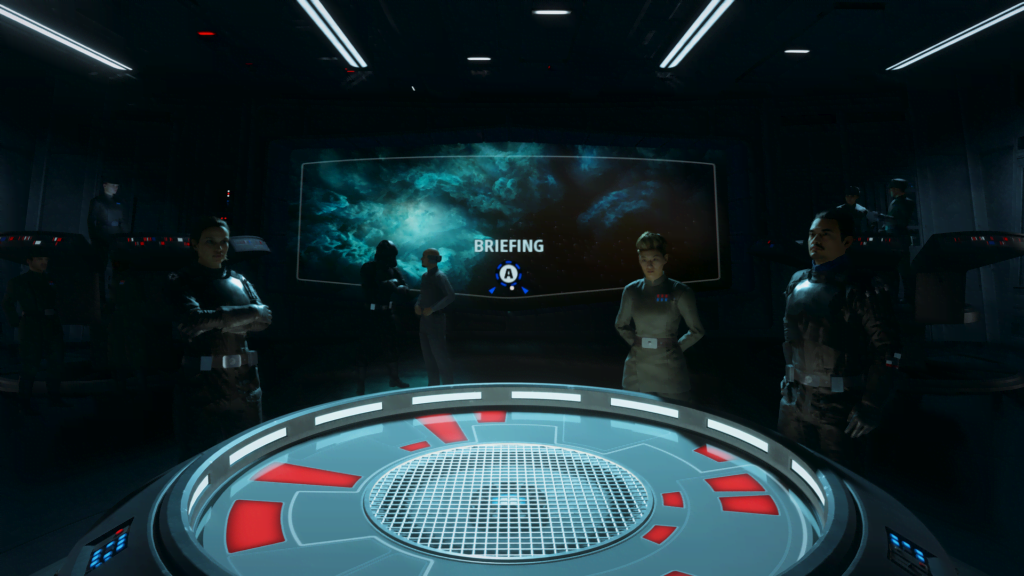
The players’ pair of pilot characters have no personality and the supporting cast to fail to feel meaningful or appear any less than stiff. Captain Lindon Javes of the New Republic is the only character with a story that feels fleshed out, largely defined by a singular act in the prologue that is built upon throughout the story. Imperial Captain Terisa Kerill meanwhile is the lone character of the Empire to receive much depth, not enough so to remain particularly interesting or memorable.

Unfortunately mission variety leaves a lot to be desired. Escort missions, protect this, destroy that type of objectives feel very familiar very quickly. It would have been nice to see a little more complexion within these objectives if they were to be so limited in scope. Luckily, playing on the higher difficulties is significantly more challenging and the approach to tackle these mundane objectives becomes a lot more dangerous. This causes the player to switch lanes in terms of their boldness to push the objective and encourages a more tactical and strategic focus to accomplish the task at hand.
No cockpit? No action
In between the missions, the player is able to inspect their starfighter and interact with characters from a first person perspective that is limited to looking around the hangar. The character interactions in these moments are for the most part optional and its easy to see why. The conversations lack purpose or meaningful contribution to the overall story, instead they mostly offer insight into the characters backgrounds that bear no consequence, inclusion or mention in the main story. This redundant dialogue can be skipped if the player loses interest.

This aspect of the gameplay feels very disconnected with the interaction limited to looking around, interacting with few points of interest and no actual movement. These sequences come across bland and eliminate any pacing established between the missions.
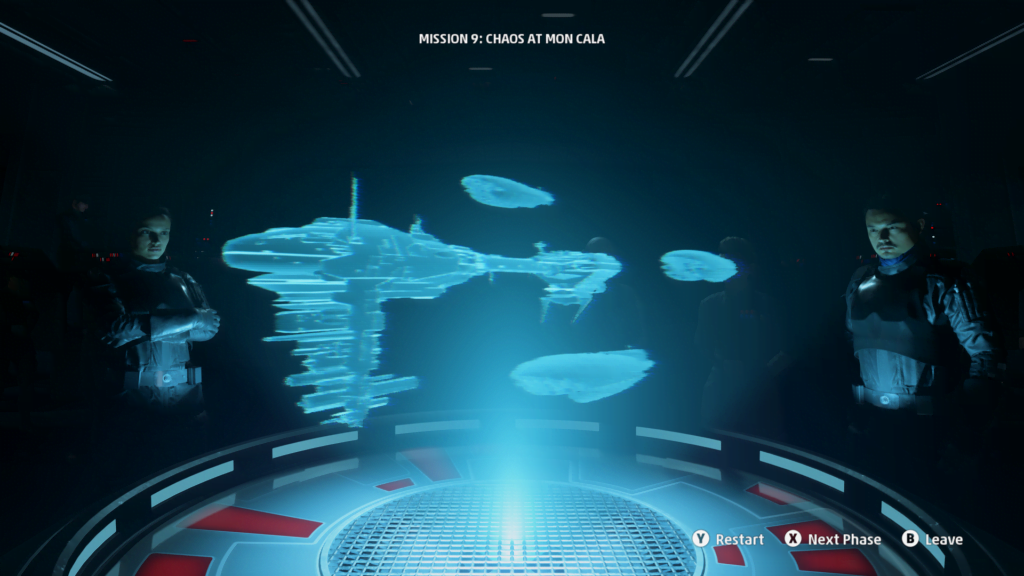
The player always starts in the hangar after a mission and any cinematic that may follow. When the player is ready for the next mission, they enter the briefing room. Here, a very in depth mission briefing plays out with the cast surrounding a war table with holographic images visualising the mission objectives. These are surprisingly detailed and make the missions feel more legitimate and structured, full of purpose and intent.
“I’ll try spinning, that’s a good trick!”
Outside of the cinematics in between missions, the gameplay is excellent. The depth of the mechanics layered into every aspect of the actual gameplay is so intuitive and engaging. The integrating of a traditional HUD into the console of the actual starfighter the player pilots is clever and manages to declutter the screen while also providing a more simulation type of experience.
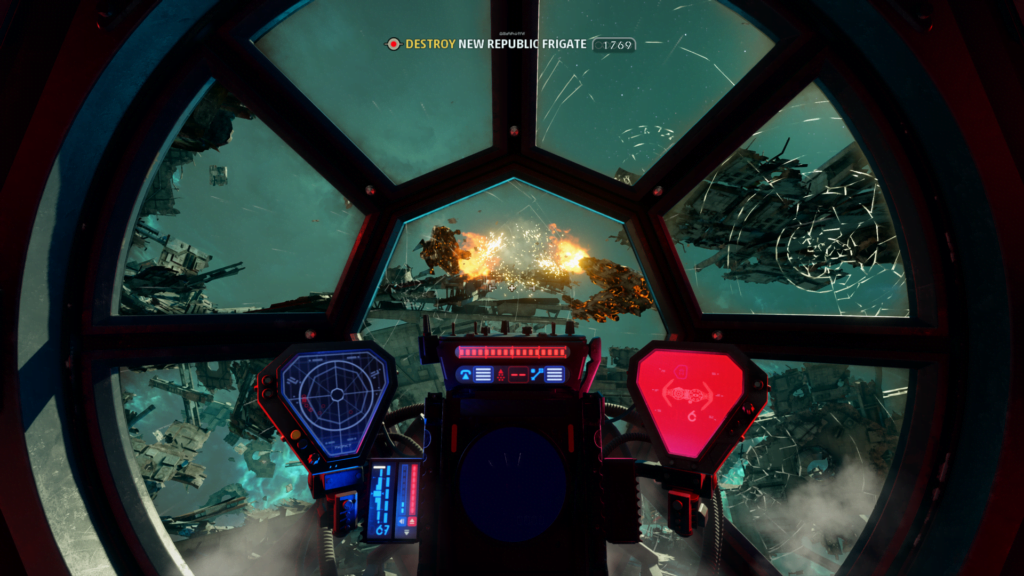
Visual indicators for the boost gauge, laser overheating, health, shields and radar for instance feel much more enjoyable to monitor than being simply plastered over the screen obstructing the view of incoming enemy fighters or debris that may damage the players starfighter. This visual dynamic extends in that each of the 4 available starfighters for both factions are completely unique in the way the cockpits and displays are laid out. The colour co-ordination and underlying design of each mechanic remains consistent however, eliminating any concerns of struggling to read the integrated HUD dispute the unique layouts.
Managing speed to increase maneuverability or diverting power from weapons to engines for an additional speed boost are such fun features to experiment with, as is rerouting the power to the front or rear deflector shields to strengthen one while exposing the other. Star Wars: Squadrons is very tactical, very strategic and very much a case of making on the fly decisions and calculated risks.
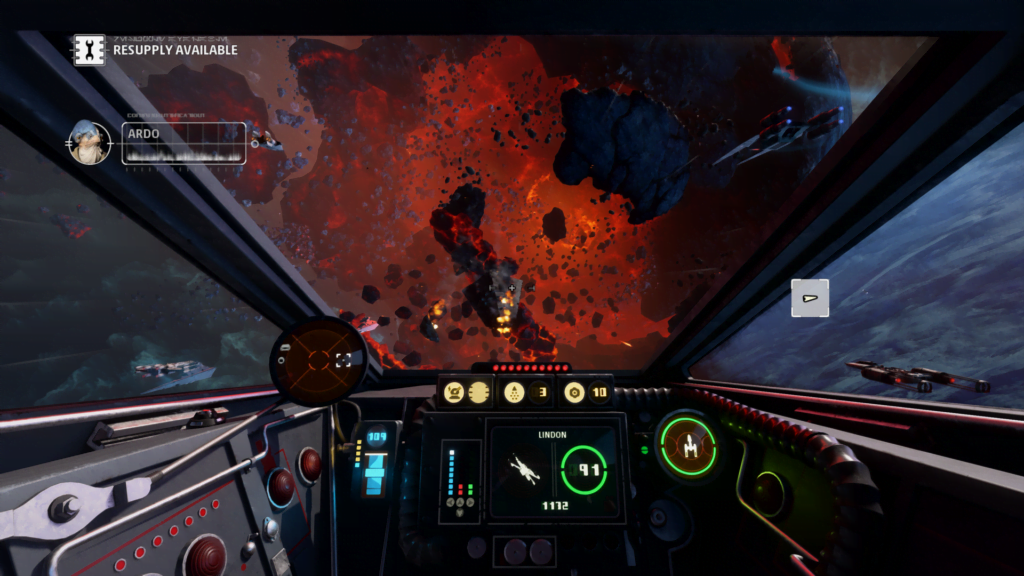
Diverting power to weapons, engines and shields obviously strengthens that particular function at the expense of the others. Simple button presses of the D-Pad make this accessible and instantaneous to execute. The power can be redistributed evenly across the 3 systems by simply pressing down on the D-Pad.
Resupply can be requested from ally Support class starfighters to replenish health, provide special ammunition such as missiles and countermeasures. Resupply can also occur by flying to your fleets Capital Ship and approaching the hangar. Here the player is also able to switch to a different type of Starfighter.
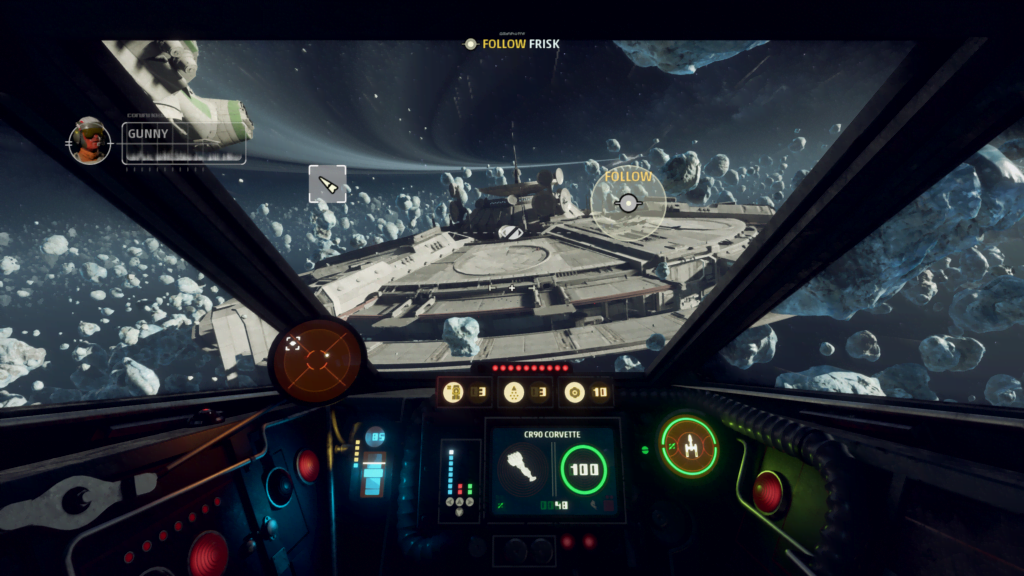
The player is able to direct their squadron to attack objectives or enemies as well as defend targeted ships for instance. These commands are a huge asset when playing with AI to provide a more focused combat experience.
The different classes each have different strengths and weaknesses as far as the stats of their starfighter is concerned as well as some exclusive offensive capabilities. The Fighter class is a solid all-rounder, the Interceptor class is faster and more agile but at the expense of Hull and Shield durability, the Bomber class uses Ion Cannons and missile payloads to immobilise and deal massive damage to Capital Ships and finally the Support class is useful for projecting shields on friendly targets to provide additional defence.
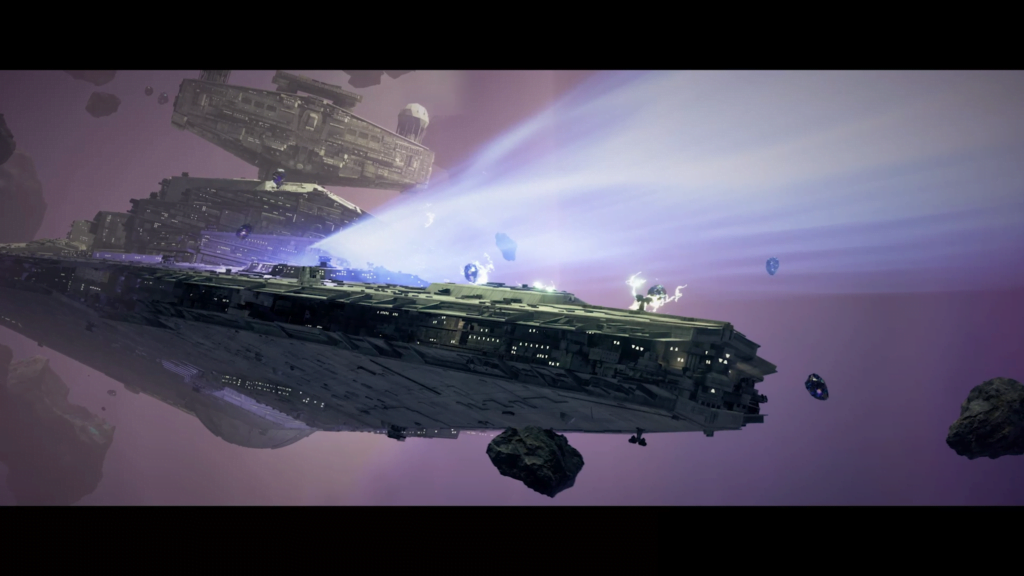
Each starfighter can be customised in a number of ways, not unlike constructing a build in an RPG. Offering a myriad of options to personalise the starfighter to the player’s personal preferences, alternative primary weapons, auxiliary components, countermeasures, hull and engines each have at least 4 to choose from. Aside from the default loadout for each component, each has its share of advantages and disadvantages.

For example, switching out the default Standard Hull for the Sienar Laminasteel Hull reduces auxiliary damage by 50% but increases primary damage taken by 20%. Just the like balance in the force, the player must exercise balance with their starfighter’s loadout to ensure the pros outweigh the cons. New components are unlocked by spending Requisition which is earned from increasing in Pilot Rank from playing the multiplayer modes.
MP is MVP
A surprisingly light Multiplayer mode in terms of mode variety is the real highlight of Star Wars: Squadrons. Offering only Dogfight and Fleet Battles (Ranked and Unranked vs AI). The Ranked Fleet Battles become unlocked once the player reaches Pilot Level 5 which requires only a handful of games to achieve.
Dogfight puts two squadrons comprised of up to 5 pilots each against each other in a classic team deathmatch. Upon defeat, a brief redeployment countdown follows the kill cam before the player re-enters the fray. Before respawning the player is able to switch Starfighters, potentially providing a tactical edge dependent on the class structure of each squadrons Starfighters.
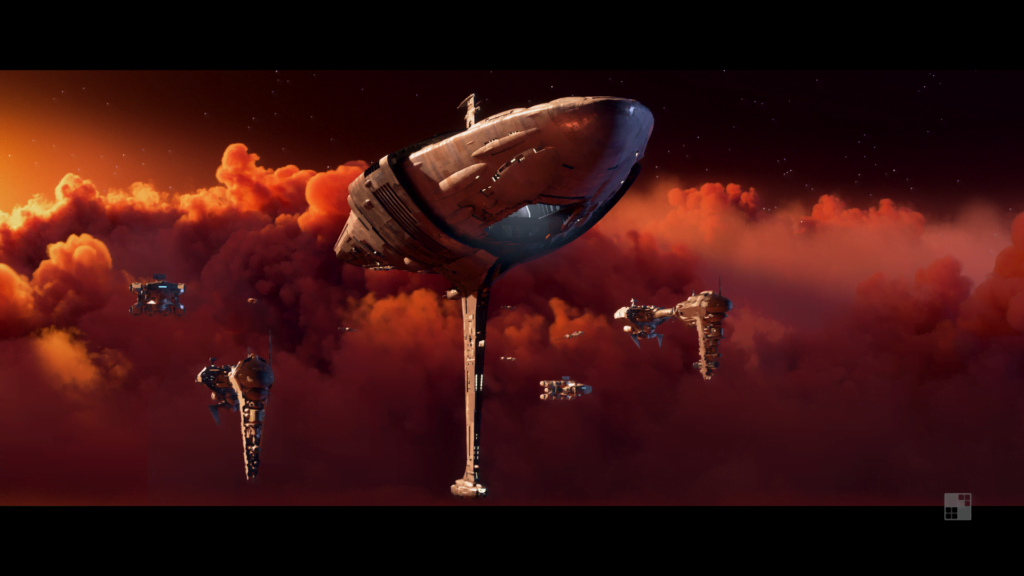
Fleet Battles are the main event of Star Wars: Squadrons. Co-ordinating with your squadron on offensive and defensive objectives to destroy the enemies Flagship before they destroy yours is an intense and action packed aerial warzone like no other. The action feels grand in scope, the vastness of the galactic battlefield this war is being waged on is stunningly detailed.
In Fleet Battles, enemy Starfighters must be defeated to increase your fleet’s morale. Once morale is max, the Fleet will feel more confident to attack the enemies Capital Ships. Defeating player controlled Starfighters as opposed to AI will increase the morale awarded. Defeating enough enemy Starfighters will see Imperial Raiders or New Republic Corvettes enter the battle. Destroying these will award major morale boost before ultimately allowing the enemy Flagship to be attacked.
Attacking the subsystems of Flagships is the most effective way to bring them down as it deals damage as well as disrupting their shield generators, or turret systems, allowing the attack to be pressed with less interruption. This mode certainly has the largest replayability of the two, encouraging teamwork and strategy to win the day in truly epic fashion.
You look good, you fly good
Pilot customisation is respectably deep considering outside of the pre-match and post-match lobbies the pilot isn’t seen. Alternate heads, helmets, flight suits, tops, bottoms, gloves, emotes and poses are all unlcokable with Glory, the primary in-game currency earned by playing games, increasing in Rank and completing the daily and operation challenges. 3 challenges refresh every day and the operation challenge lasts a lot longer, the current one available has a duration of just over 60 days and awards an Epic helmet for the New Republic pilots.
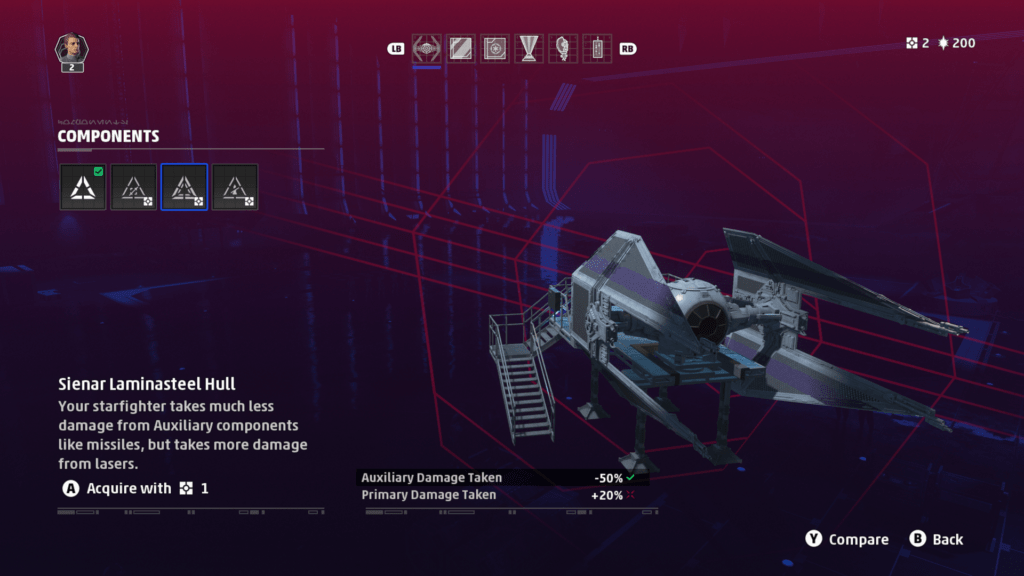
The Starfighters themselves can be customised beyond their component loadout with paint jobs, decals, holograms, dashboard trinkets and hanging flair available to unlock and personalise each Starfighter. These are all, like the Pilot customisation suite, unlockable by spending Glory earned from playing, completing challenges and increasing in Rank.
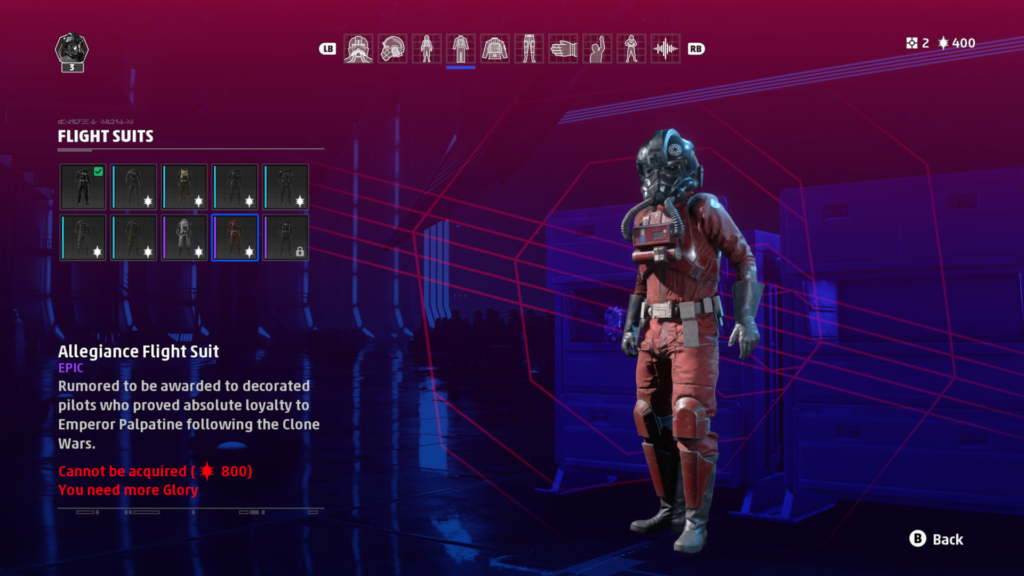
There’s enough customisation for the Pilots and Starfighters for the player to have their own completely unique squadron and the currency earned to unlock them is unlocked at a respectable rate.
Looks and sounds like Star Wars
The visuals are absolutely incredible. From the stunning backdrops of new and familiar Star Wars environments, the incredible attention to detail in the Starfighters and cockpits, there is a lot to look at in wonder.

An appropriately authentic Star Wars score and classic sound effects round out a legitimate Star Wars presentation that adds drama and elevates the tension of the fast paced combat gameplay.
“Do or do not, there is no try”
Star Wars: Squadrons is a lot more strategic and simulation-like than many may have anticipated. The more arcade feeling presentation of the Starfighter combat modes of the Battlefront series for instance is nowhere to be seen. Deep gameplay mechanics may have a brief learning curve but by playing through the story mode first, players will be competent and confident in their abilities to tackle other players in the intense pair of multiplayer modes on offer.
With dramatic action set pieces as seen in the film franchise, Star Wars: Squadrons is an excellent foundation for a fun multiplayer experience that will likely be expanded upon for years. This experience is well worth checking out for fans of Star Wars and aerial simulation titles.
+ Excellent visual integration of HUD into the gameplay
+ Depth of game mechanics
+ A lot of fun once familiar with the gameplay
+ Fleet Battles
– Story loses focus and connection with disjointed hangar segments and forgettable characters
Games of DAYNE Rating
Developed by: Motive Studios
Published by: EA
Release Date: October 2 2020
Platforms: Xbox One, PlayStation 4 and PC
– Additional links –
For more of my reviews, click HERE.
To see this review and other content from my associates at BG4G, click HERE.


